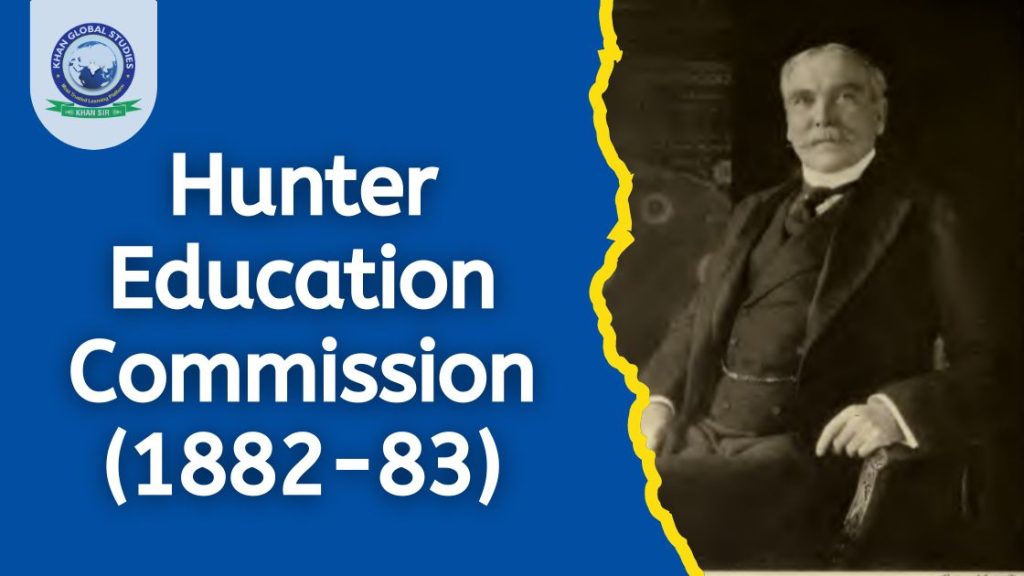In 1882, a pivotal moment arrived for education in British India with the establishment of the Hunter Education Commission. The commission was led by Sir William Hunter to address critical issues plaguing the educational system. This article delves into the commission’s objectives, recommendations, and lasting impact.
Objective of Hunter Education Commission
The Hunter Education Commission (1882-83) was established with several key objectives to improve the Indian education system under British rule. Here’s a breakdown of its main goals:
- Evaluate the Implementation of Wood’s Despatch (1854): This document advocated for a more structured and anglicized education system in India. The commission assessed how well these provisions were being implemented and identified areas for improvement.
- Assess the State of Primary Education: A major focus was to analyze the current state of primary education in India. This included evaluating the number of schools, student attendance rates, the quality of teaching, and the overall infrastructure available.
- Recommend Improvements to the Education System: Based on their evaluation, the commission aimed to identify shortcomings in the existing system and propose solutions. These could involve changes to the curriculum, improvements in teaching methods, enhanced teacher training programs, and infrastructure development.
- Promote Secular Education: Recognizing India’s diverse religious landscape, the commission aimed to promote secular education in government-run schools. This meant schools wouldn’t favor any specific religion and would respect all faiths.
- Evaluate Missionary Education: Missionary schools played a significant role in education at that time. The commission assessed their educational system and suggested ways to integrate it with the government education system better.
A Commission for Change
The Hunter Commission arose from concerns regarding the slow implementation of the Wood’s Despatch of 1854, a landmark document that advocated for a more structured and anglicized education system in India. Additionally, the commission aimed to assess the state of primary education and propose measures for its expansion and improvement.
Key Recommendations
The commission’s comprehensive report, released in 1883, contained a series of significant recommendations. These included:
- Focus on Primary Education: The commission emphasized the need to prioritize primary education, recognizing it as the foundation for further learning.
- Differentiated Curriculum: It suggested a diversified curriculum with options for both literary and vocational education, catering to diverse student needs.
- Improved Infrastructure: The report highlighted the importance of developing proper infrastructure, including building more schools and providing adequate training for teachers.
- Religious Neutrality: It advocated for a policy of religious neutrality in government-run schools, respecting the diverse religious makeup of India.
Lasting Legacy
The Hunter Commission’s recommendations had a significant impact on the evolution of Indian education. It spurred the expansion of primary education and laid the groundwork for a more inclusive and practical curriculum. While its focus on anglicized education remains a point of debate, the commission’s emphasis on infrastructure development and teacher training set the stage for further improvements in the system.
Conclusion
The Hunter Commission (1882-83) stands as a crucial turning point in the history of Indian education. Its legacy lies in its comprehensive approach to addressing the shortcomings of the existing system and paving the way for a more accessible and well-rounded educational experience for future generations.





